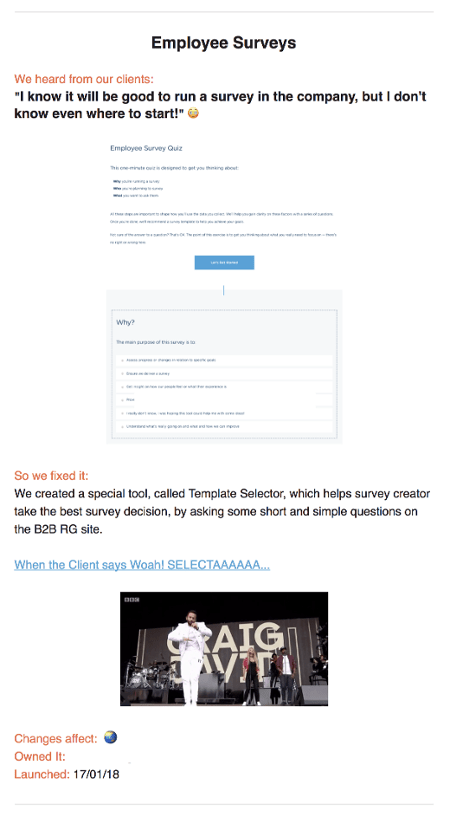
6 min read
Millennials are used to getting a bad rap. Apparently, we’re “entitled,” “lazy,” “unmanageable” and “ruining [insert whatever industry you’re concerned about here].”
This is a pretty big group of people to be making negative assumptions about. The Pew Research Centre defines the millennial generation as anyone born between 1977 and 1996, PWC defines it as 1980 to 2000, so a millennial could be anyone born between 1977 and 2000. This group includes anyone in your workforce that’s between 18 and 41 years old.
This means we’re a diverse group of employees with different likes and dislikes, different languages and countries of origin, different intrinsic and extrinsic motivators, and it’s dangerous to assume that your “millennial workforce” will all think and feel the same.
If you want any group of people within your organisation to pay attention, you need to understand your different audiences to tailor your communications appropriately.
I can only speak from experience, but here’s what I’ve noticed has worked for me and the clients I’ve worked with who have a large millennial employee demographic. While millennials are set to take up at least 40% of the workforce by 2020, these tips are likely to apply to your business regardless of what generation your team members come from.
Sometimes, when we ignore you, we’re actually trying to say something
How easy is it for your employees to say “no”? When you seek employee feedback, employees need to feel safe enough to give it candidly. Take a closer look into who isn’t responding to a survey, or who isn’t participating in an initiative - if patterns emerge (like low participation from the same people, teams, or geographies), there’s a reason. Maybe the physical distance of remote employees is translating into a cultural divide, or there’s a manager employees feel threatened by, or who they don’t trust, so they don’t feel they can be honest in their feedback.
Sometimes silence speaks volumes, and is worth looking into before looking for a solution.
Surveys are important and useful but if you’re putting your employees through the cycle of asking for feedback and then letting the results disappear into a digital void, or sweeping negative feedback under the carpet, it won’t take long before we tune you out. If you’re going to use surveys tools, ask make sure your employee survey questions focus on things your organisation has the capability and intention of addressing in the near future.
Michael Ford, the CEO of Steinhoff, took an admirably radical approach to employee feedback by providing all 10,000 employees his mobile number and email address, encouraging them to text or email him at any time with questions or suggestions.
While this might be a big leap for your leadership team to take, reaching out for feedback doesn’t always have to be scary. Look for ways that allow your employees to talk on their terms. The more you listen, the more your employees will too.
Pro tip: Use simple tools and targeted questions to gain insight into your employees’ experience or engagement level. Respond to that feedback and communicate results quickly, instead of holding onto it when until you have all the answers.
You assume we all want and need the same information

You know the deal. You’ve got a company newsletter going out soon, and every manager and his cat wants to get their announcement in this issue so you end up with 5,000 words of “important news” in people’s inbox and it gets… deleted.
Is it necessary to include everything? Or is it possible — and more effective — to segment information and create content for specific groups, so that people see information they actually need? I’d say the latter has worked for me. Having the autonomy to choose what discussions I participate in and distinguish the noise from what actually enables me to do my job better means I can use my time more productively.
It’s not just millennials, but everyone who has less time to read. We are all bombarded with more messages than ever before - be it in our inbox, on our phone, or in a meeting.
Pro tips:
-
A personalised user experience keeps staff engaged. Use tools like SmartHub® segments to create content to suit different employee groups, for example, based on their location, department and job role.
-
Use descriptive menu titles and page titles when you publish content so people can easy search for and find what they’re looking for.
-
Indicate an estimated reading time for company posts to help people decide if and when they will read it, and to encourage those writing announcements to keep messages short and simple.
You aren’t talking to them on their terms
What’s the language and tone of your internal communications like? Are you writing the type of thing you would enjoy reading? Don’t underestimate the power of brevity — we’re the generation who can summarise a month-long holiday in 140 characters, a couple of emojis, or a series of appropriately selected GIFs.
Download our eBook for more examples of communicating with a millennial workforce »
One of the reasons I enjoy reading Reward Gateway’s internal product updates is because they’re so well-written. The emojis in the subject line get my attention, and even though there’s plenty of technical information to absorb, the tone is conversational and easy to follow. The product team use GIFs, subheadings and bullet points to illustrate complicated ideas in succinct, interesting, and easily digestible ways. Here's an example:

Pro tip: Financial summaries or technical updates don’t have to be boring — there are engaging and visual ways of sharing that information. Do you really want people to spend time reading a 2,000-word report when a bright infographic would do the same job? If you want your customers to think your company is approachable and friendly, then start by speaking and writing to your employees in the same way.
You rely on one-way communication up and down the chain of command
When communication relies on the organisational chart to flow up and down, so many things go wrong.
First, the communication flow is slow, unreliable, and the information provided is more likely to be misinterpreted as it makes its way back up the chain of command. Second, the person (or people) who did the work usually don’t get acknowledged, let alone formally recognised for their contribution. They end up wondering if their work is meaningless and has any impact at all, and why they bother trying so hard.

Opening up the channels of communication and engaging employees of all ages and all teams to contribute, comment, or collaborate not only improves engagement, it improves efficiency and encourages cross-team interaction.
Pro tip: If you want access to data quickly and to solve problems efficiently, then make information and ideas easier to share between different levels of the organisation.
In the end, we want the same things
Millennials aren’t a group of jaded misfits, out to squeeze the most out of the company we work for before we move on. The Economist reported millennials, “want roughly the same things regardless of when they were born: to be given interesting work to do, to be rewarded on the basis of their contributions and to be given the chance to work hard and get ahead”.
It turns out the only real difference between me, my peers, and the generation before us, is our age. If you listen hard enough, we’re actually just as keen to make a positive impact in our workplace. Just give us a chance, and give us a voice.

 Hayley Cooper
Hayley Cooper



